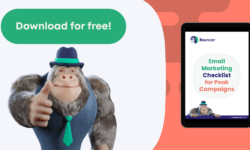It’s safe to say that email outreach has become the new cold calling and if you’re on the receiving end of either of those things, you’re probably not a fan.
However, outreach emails can have an incredible impact, if you write the right emails to the right email list.
Stats say that the average open rate for a cold outreach campaign is 44% and you can hope for results of 60% and up. However, to get to that point, you need to get great at writing these emails.
So, here is how to craft a cold outreach email that gets opened, read, and clicked.
What is email outreach?
Email outreach refers to the process of sending emails out to potential customers or clients that have not contacted you before. It can have several different uses including announcing updates or changes to a company, promoting a service or product, or introducing new members to an existing group.
Simply put, it refers to identifying relevant prospects to whom you will be able to promote your brand and content by encouraging them to take some sort of action, such as purchasing a product.
Although it may appear straightforward, there is more than just a simple pitch involved in email outreach marketing. In many cases, it can actually be regarded as spam since many digital marketers spam their entire list with the same bad outreach email and no personalization.
Read more: How to do Outreach Marketing in 2025: an A-Z Guide
They blindly send generic emails to as many email recipients as possible, regardless of whether or not they are likely to be interested in the message. This approach does not do anything except send you on a fast track to the spam folder.
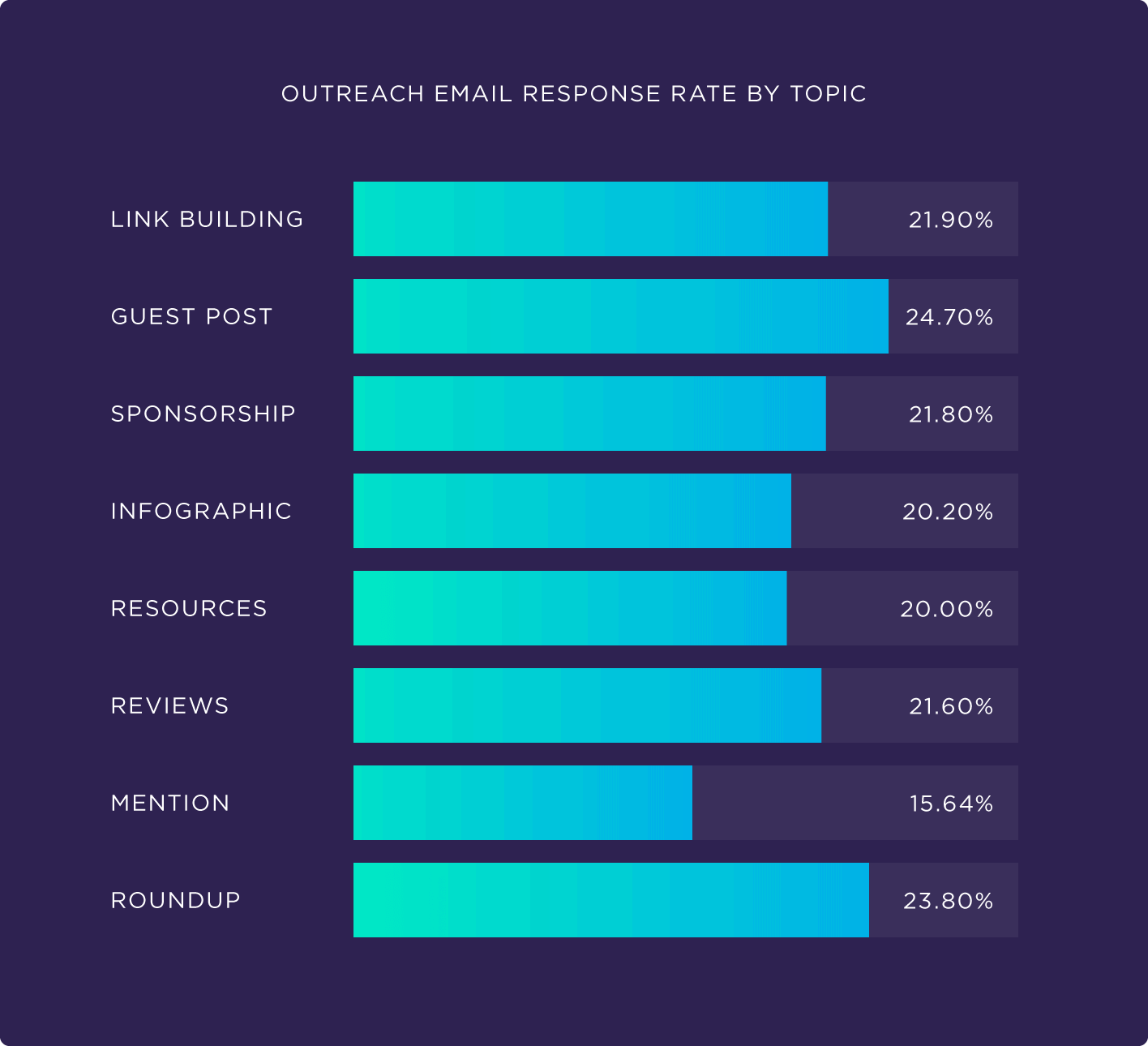
Good email outreach is not the same as sending spam blindly. It is centered around carefully targeting the right people who may find your information valuable, sharing it, and asking them to take action if they like it.
Does outreach email work?
In short, yes, email outreach can work well when done right. Email has become the main lead-generating medium for almost 90% of marketers who can vouch for its affordability, effectiveness, and scalability.
In fact, companies that perform cold outreach campaigns have a response rate of around 15-20%. When done correctly, cold email outreach can help you put together a robust pipeline of sales leads that can be nurtured and converted into customers or prospective clients.
Why email outreach is important
Email outreach is an essential part and relevant to businesses with various different benefits for companies. It can help with link building, together with a backlink checker, for example. One of the most effective ways to build backlinks (besides using an backlink building agency such as https://linkhouse.net/) is by using email outreach. In fact, sending outreach emails is involved in the majority of link-building strategies.
You can also use cold email outreach strategies to get press coverage of your business by reaching out to journalists. Finally, you can use sales outreach for relationship building. It can help your brand develop relationships with other professionals in your industry, making connections that can lead to interviews, collaborations, guest posting opportunities, and more. You can also try out warm emails if you’re up to it.
Outreach email templates and anatomy
Cold emails are often the same as any other typical emails, but there may be some differences in structure and style. The ideal cold email outreach campaign template should include:
- Subject Line
- Introduction
- Opening
- Body
- Call to Action
- Signature
The same applies if you’re writing one email or entire email sequences.
How to write outreach emails
Let’s take a closer look at all the different sections of an outreach email.
Subject line
The subject line of your email is the most important element of the email itself. It will contribute to your open rate significantly, which is why it’s important to pay attention to this section. If your recipient isn’t interested in your subject lines, they are unlikely to open your email, wasting all your time and effort creating your email pitch.
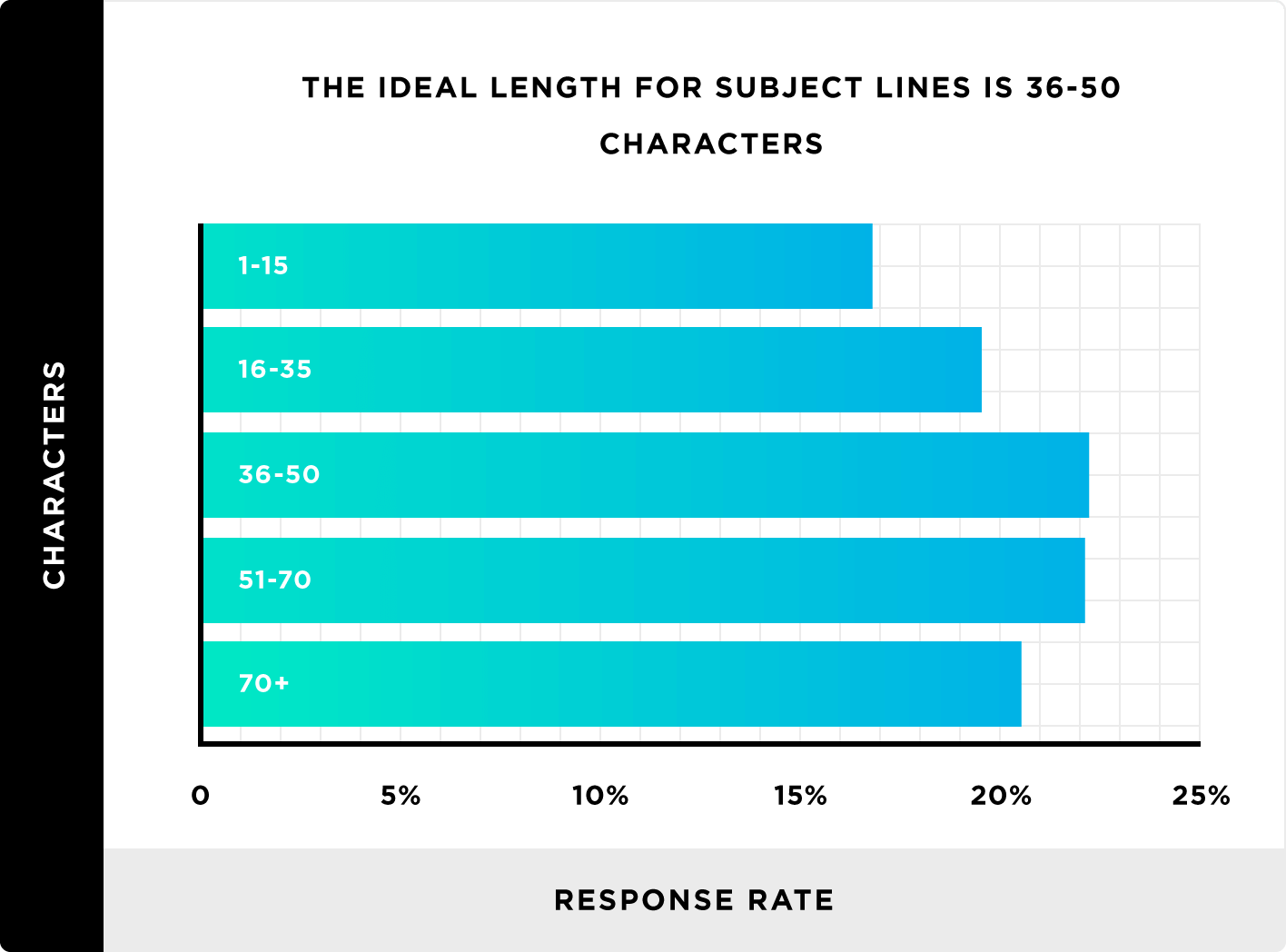
There are different ways that you can write an email subject line, but the best ones will spark the interest of the reader, demonstrate a sense of urgency, and suggest that you are acquainted with the receiver in some way.
Introduction
The introduction will establish the tone for your future conversation and is used to help you as the sender build trust with the recipient. Just like non-cold emails, you should create an email intro that is quick and offers personalization.
Opening
You do not need to write a long paragraph for the opening line of your email body; however, you should use this section to provide a further introduction of yourself. For example, this is the section where you can give your name, the company that you work for, and anything else worth including. It’s a great example to include a personal touch or be creative with this part.
Body
Avoid a long-winded pitch – the longer your pitch, the more likely your recipient is going to close the email without reading.
The main goal of this section is to keep your points organized and concise. You should have a specific purpose or objective for each paragraph in your email. Consider introducing the content with a situation or example that is related to what you are writing about.
You can also consider creating a personalized email if you want the best conversion rates from your prospect list. This can make it easier for the reader to digest. You can also provide something of value or use social selling techniques but avoid directly promoting your service or product in your cold email campaigns.
Call to action
A call to action or CTA is an important aspect of cold email outreach. The CTA is a piece of text that is designed to prompt the reader to take action, which will usually involve signing up for a newsletter or making a purchase. A CTA will usually be in the form of a link. You should stick to one CTA per email since several CTAs can cause confusion for the reader as there will be too many options to choose from.
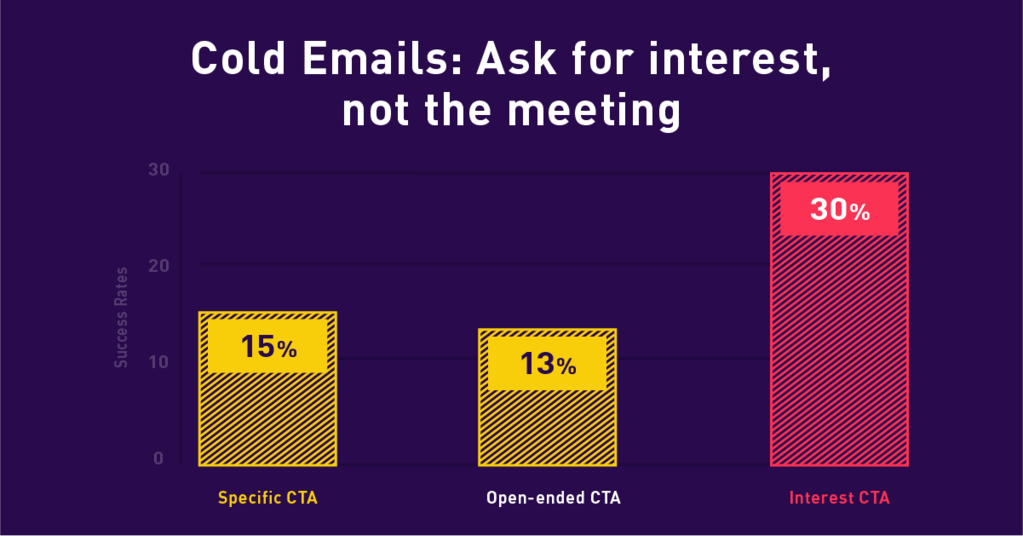
Signature
Finally, an email signature will help to prove that you are a real human rather than a robot spammer pushing out email content. Put together an email signature that is complete and easy to read.
Email outreach best practices
There are various steps and best practices to keep in mind when it comes to putting together your cold email outreach strategy. These include:
Find the right prospect
The first step to writing a successful outreach email is to find the right person. Think about your target market and who you are interested in reaching. Check what stage they are at in the business, industry, or country that they operate in to narrow down your suitable prospects – it’s not rocket science.
When you have identified your ideal customer, create a list of contacts that match the characteristics. If you do not have a direct connection to any of these prospects, you should find a connection that does since referrals are the easiest way to obtain better results. When narrowing down your prospect lists, be as detailed as possible to improve your chance of achieving a high open rate.
Find email addresses
Once you have identified your ideal customer and found some excellent prospects, it is time to find their email contact information. You can do this by searching company websites, LinkedIn profiles, and other social media.
However, it’s important to respect your prospects’ privacy and avoid spamming them. Email address generator tools can also be used for this purpose. Once you have the contact information for your contacts, it is time to start building a relationship with them. Do this by sending engaging emails to help them get interested in what you offer.
To keep your deliverability rates high and your sender reputation intact, make sure to validate your emails first with Bouncer before sending them out to your target list.
Create a template
Email marketing is a type of direct marketing that is done via email. It serves the purpose of allowing marketers to find additional information about what the recipient is interested in and likes, which products interest them the most, and who they are.
While you should get an opt-in from your recipients before you send any kind of email, you can use email templates to simplify the process of winning over your readers. You can find a lot of ideal email templates online and customize them. Use brandable email templates or design your own to stand out from the crowd and maintain consistency over time.
Personalize the outreach
Personalizing your email means making your emails relevant to your subscribers and talking about what is on their minds to warm things up before you move into the business side of things.
Address your subscribers by name and reference the specific content that they have subscribed to your brand for. Personalize your emails further with graphics, images, links, and texts that relate to your subscribers and collect customer feedback to make it even better.
Send Follow Up Emails to Your Email Outreach Campaigns
Once you have sent your initial email, it’s a good idea to send a follow-up email or two to make sure that it has been received and are interested in hearing from you more. You can either change the content or stick to the same subject line as your original message, however, the email that you send should be engaging.
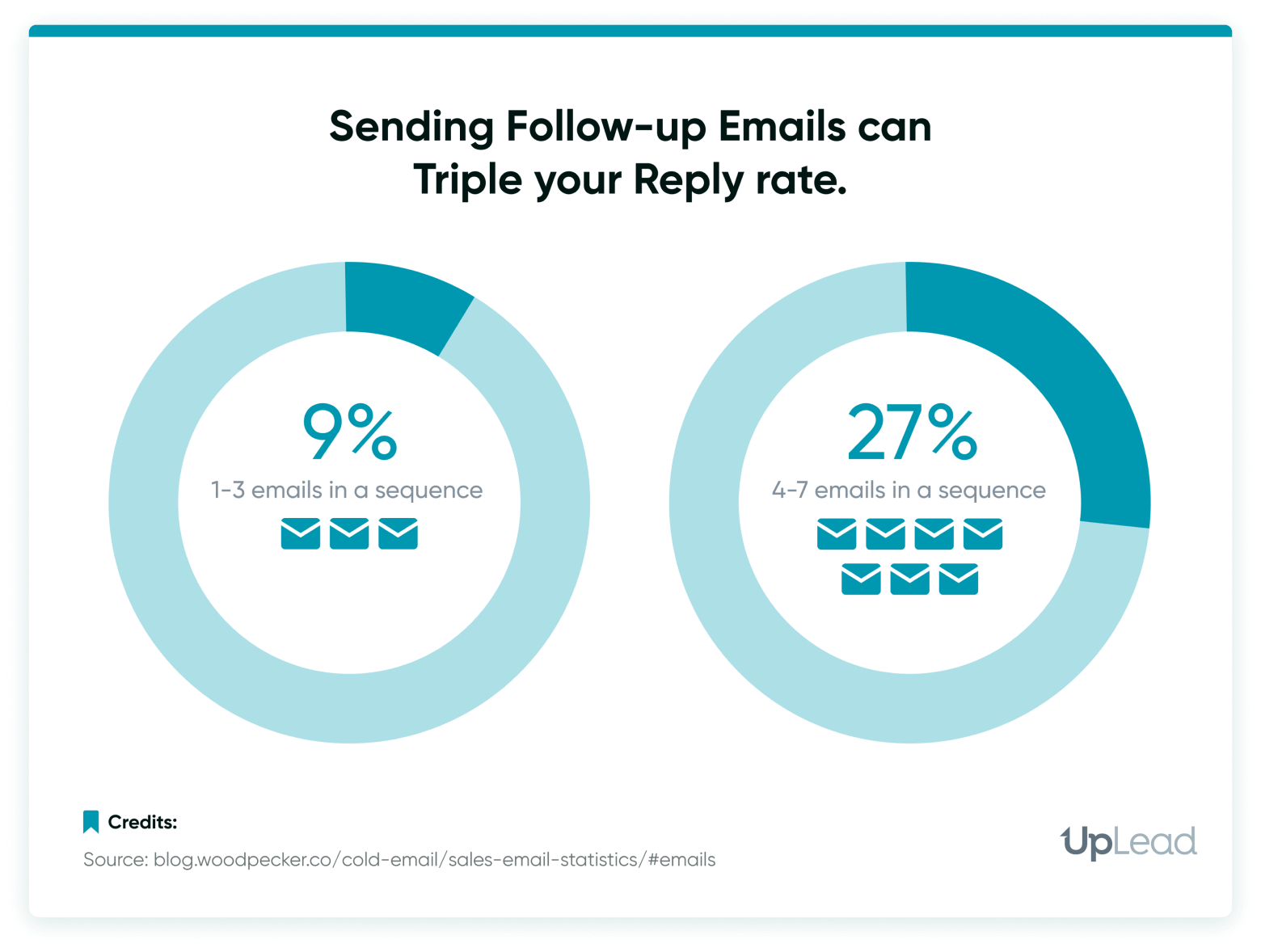
The goal of the follow-up email is to get the attention of your subscriber in their inbox and encourage them to read your initial message.
When done right and the correct things are included, outreach emails can benefit your brand.
Learn more tips on how to write an email that converts.
Wrapping up
An outreach email that is written well and to the right audience can open up many doors. Whether you’re looking to publish a guest post, spark a conversation with a lead, or convert someone you haven’t talked to in a while, outreach emails can benefit your business.
One of the basics of sending good outreach emails is to make sure your list of prospects is clean and filled with legitimate emails. With Bouncer, you can validate your emails and remove the ones that are no longer valid, that have been deleted, that have typos, or any other type of error.
Try Bouncer today for free and supercharge your cold outreach campaigns!
Frequently asked questions
Is sending cold outreach emails legal?
It depends on who you’re sending them to. If the person on the receiving end expressed some interest in your products or services and willingly gave you their email, then it’s fully legal to send these emails. However, to avoid legal issues and getting in trouble with your email provider, make sure to check GDPR and similar national and local laws before launching a campaign.
Does cold outreach email work?
If you do it right, you can expect a high success rate. It will mostly depend on your positioning and offer, and how personalized your cold emails are. If you send highly personalized emails to a small audience you know is interested in your offer, you can expect quite a few positive responses.
What is the average cold email response rate?
With proper email personalization, you can expect high response rates. However, Gmass states that the average response rate for a cold email is anywhere from 1-5%.
